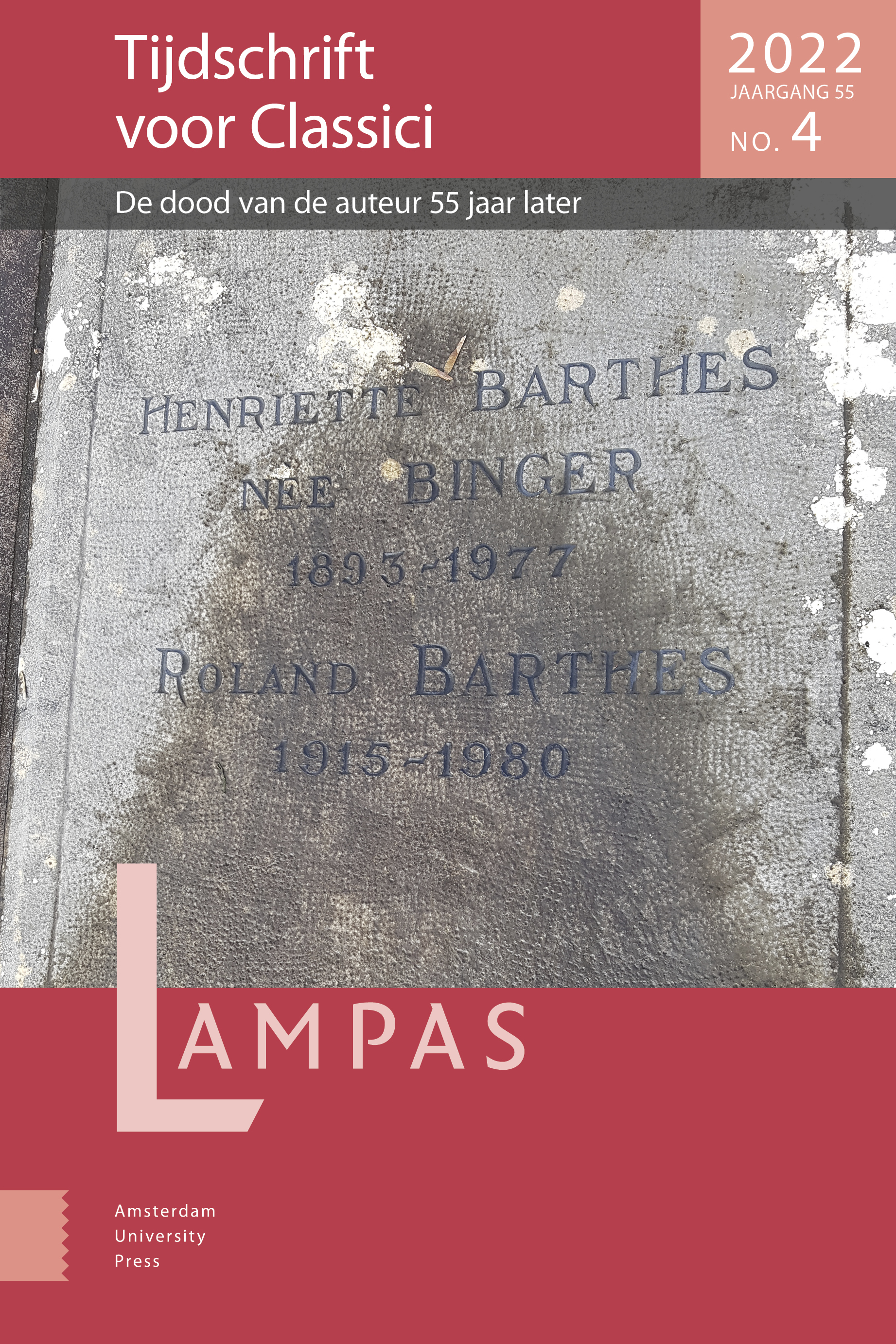-
oa Auteurs en personages
Antieke vertellingen en moderne narratologie1
- Amsterdam University Press
- Source: Lampas, Volume 55, Issue 4, nov. 2022, p. 356 - 371
-
- 01 nov. 2022
Samenvatting
This article starts from the tendency of ancient critics to ascribe utterances of characters to authors. This, it is argued, is not simply a conflation, but an expression of a view of narration which is distinct from our model of it. Instead of envisaging different narrative levels that are clearly separated from each other, ancient authors and readers viewed the author as impersonating characters in direct speech. This ancient view is closely linked to the salience of oral performance, in which the speaker either adopts the voice of the author or that of characters, and, more broadly, to the idea that the author has to re-enact the actions of his characters in his phantasia. The argument of this paper illustrates an approach to ancient narrative that complements the dominant narratological approach: after the application of categories forged chiefly in readings of the modern novel has let us appreciate the modern features of ancient texts, it is time to become more sensitive to the distinct nature of narrative and its conception in antiquity.


